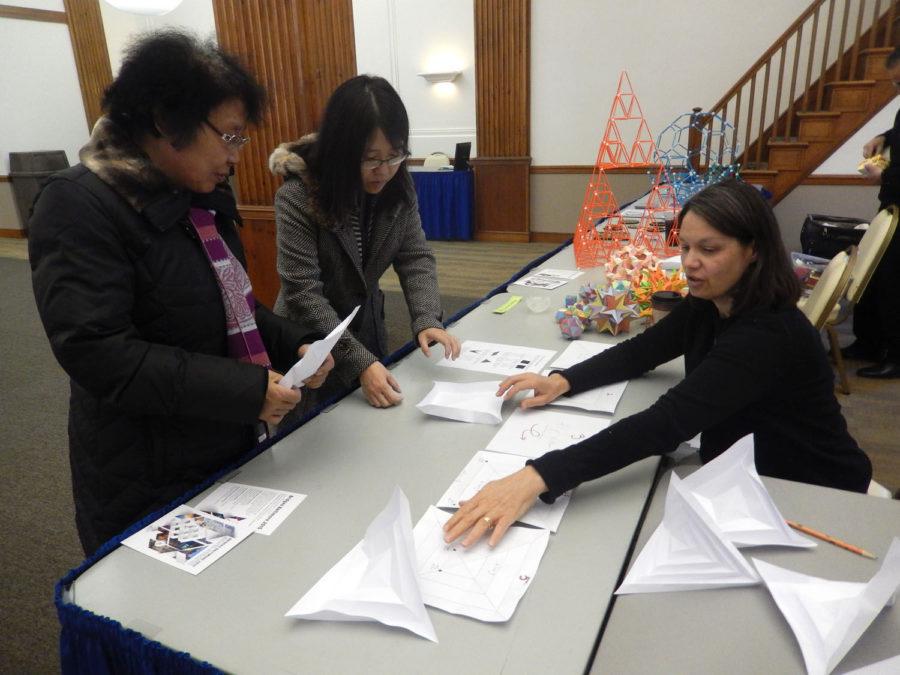Departments push to blend art and science
November 23, 2014
While they may not seem to go together at first glance, art and math have more to do with each other than you think.
The national movement to add art to the group of majors in Science, Technology, Engineering and Mathematics, inspired the University’s math department to organize a mathematical art festival called MoSAIC (Mathematics of Science, Art, Industry, Culture). The festival, which offered mini-conferences to the public across the subjects of math and arts was held from Friday to Saturday at the Illini Union and Altgeld Hall.
“It is useful to be able to think creatively, to be able to emphasize, understand things in a way that art teaches you, to understand things across all majors, across all field of study,” said Guen Montogomery, art and design advisor.
Montogomery believes it is important to incorporate arts into STEM majors.
“It is necessary to understand your world. STEM majors are intertwined with arts so closely,” she said. “Artists are helping to create our world; they are helping to create the media that we consume. And I think that if you balance these things, then you understand your world.”
Get The Daily Illini in your inbox!
In response to the pressure and demand of incorporating STEM fields of study into arts, the Art and Design program began offering a minor in the field last year, Montogomery said.
“We have 31 in the art and design minor right now, and more of them are from STEM areas of study,” Montogomery said. “There is a huge interest in engineering, computer science, molecular biology.”
William Bullock, professor of industrial design, said majors such as industrial design bridge the gap between science and art.
“We utilize engineering because they are the technical aspects of the product, like the electronic design, the mechanical design, all of the technical aspects of the product relying on engineering and sciences,” he said.
A successful product requires both arts and engineering, Bullock said. On the art side, there is a demand for good design and a visual interface that is aesthetically pleasing, while the technical aspects of the product are done using engineering.
He emphasized the connection between art and engineering in terms of a product.
“If you don’t like the way (the product) looks, you probably won’t buy it,” he said. “Once you buy it, if it doesn’t function well, you won’t keep it. ”
Nan Goggin, director of the School of Art and Design, said there is an effort to reach out to computer science.
She mentioned a program called CS+X, which is a partnership between the College of Engineering and the College of LAS that allows students to get a degree combining the two fields.
Nathan Kilps, graduate student and instructor of ART 140, said people tend to separate the two fields based on creativity and fact.
Rather than put engineering and arts at the opposite spectrum in terms of the fields of study, Kilps said it is important to view the commonality between the two.
“Art was about putting things together and figuring things out, and science was about the same thing,” he said.
Kilps’ course, Introduction to Art, is open to non-art majors and encourages students to blend their background from other fields with the creativity of art.
“Once they learned that art is about problem solving is when they realize there is a connection,” Kilps said. “People have this idea that only some people can do art. Anybody can do art and anybody get better.”
Liyuan can be reached at [email protected].







